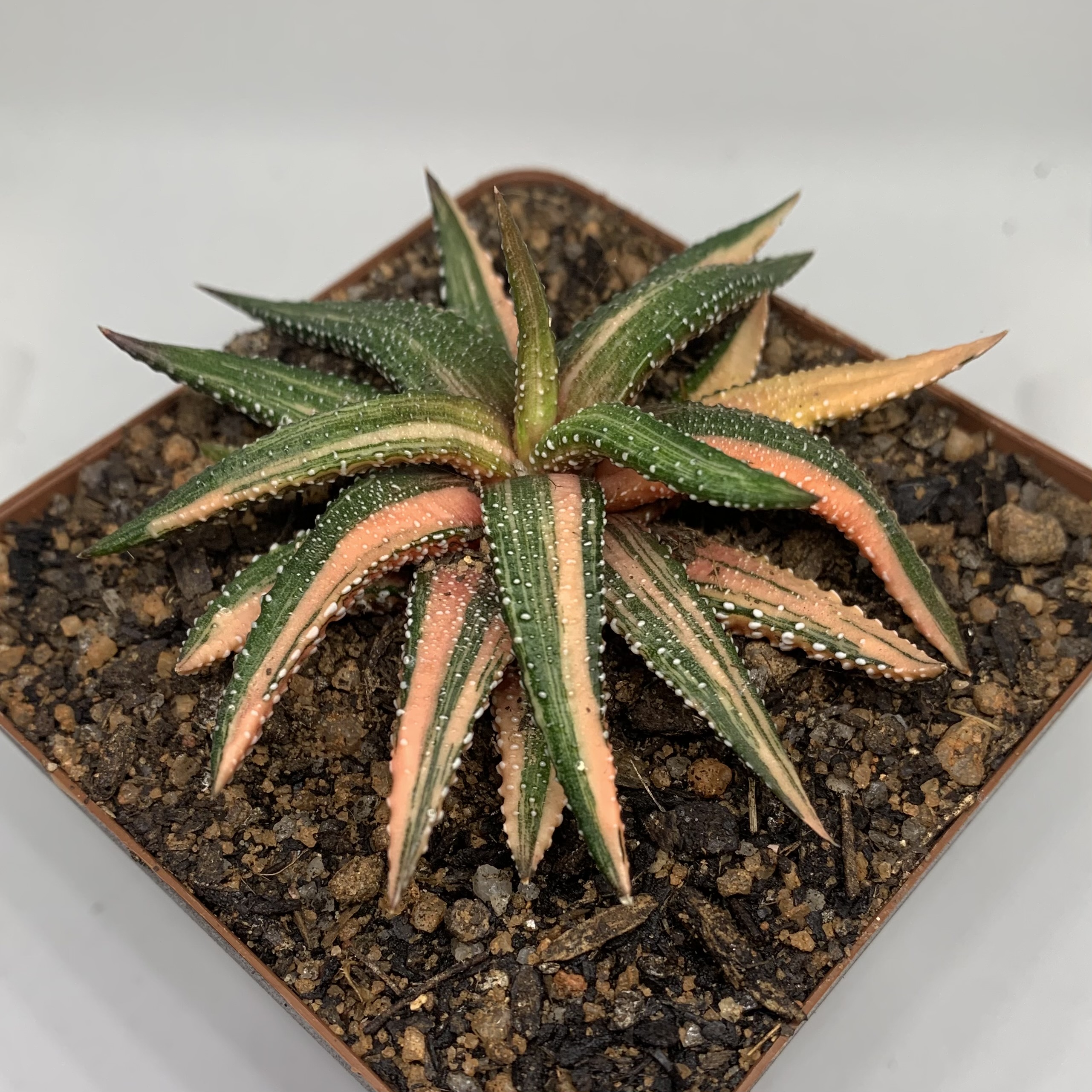
Haworthiopsis attenuata f. tanba variegated
R120.00
Out of stock
Formerly: Haworthia attenuata
Family: Asphodelaceae
Haworthiopsis attenuata f. tanba variegated is a striking and sought-after variegated form of Haworthiopsis attenuata, known for its bold white markings and creamy variegation on the leaves. This variety originates from a form called “tanba,” which features pronounced tubercles and more compact rosettes, combined with variegation that adds ornamental value.
Origin and Habitat
The species Haworthiopsis attenuata is native to the Eastern Cape of South Africa, thriving in rocky, shaded environments with well-drained soil. The variegated form, however, is mostly cultivated and selected for its unique leaf pattern rather than occurring commonly in the wild.
Plant Description
This plant forms small, tight rosettes of thick, pointed leaves covered in raised white tubercles arranged in bands across the leaf surfaces. The variegated ‘tanba’ form features irregular creamy white or pale yellow patches along with the typical green, producing a striking contrast.
Leaves have small, soft white teeth on the margins. The rosette is compact and typically grows slowly. Flowering is uncommon in cultivation but produces slender spikes with small white tubular flowers.
Care Instructions
Light
Prefers bright, indirect light or partial shade. Direct sunlight can scorch the variegated portions, so some protection from harsh midday sun is important, especially indoors near windows.
Watering
Water deeply but only when the soil is fully dry. During spring and autumn, water every 2–3 weeks, less often in winter.
Soil
Requires well-draining soil mix such as:
2 parts cactus or succulent potting mix
1 part pumice or coarse sand
1 part perlite or grit
Drainage is essential to avoid root rot.
Temperature
Thrives between 18°C and 27°C, with tolerance down to about 5°C if kept dry. Avoid frost.
Additional Information
The variegated ‘tanba’ form grows more slowly than non-variegated plants and can be more sensitive to environmental stress due to reduced chlorophyll. It offsets occasionally, allowing for propagation by division.
Pests are uncommon but watch for mealybugs. Proper light, watering, and airflow will keep this plant healthy.
Plants
Explore our rare cycads, clivias, and succulents.
Shop
Garden
© 2025. All rights reserved.
(WhatsApp)
